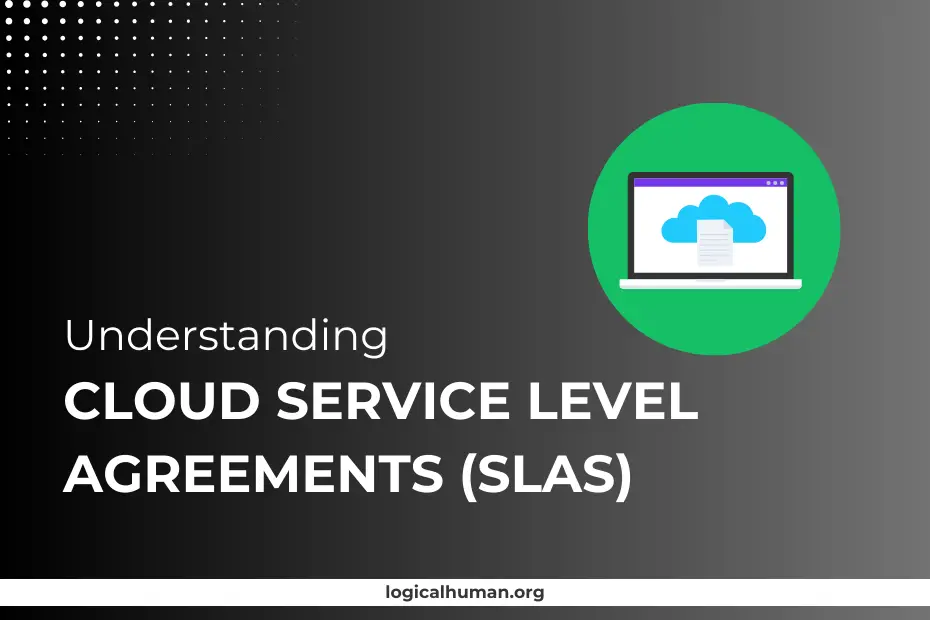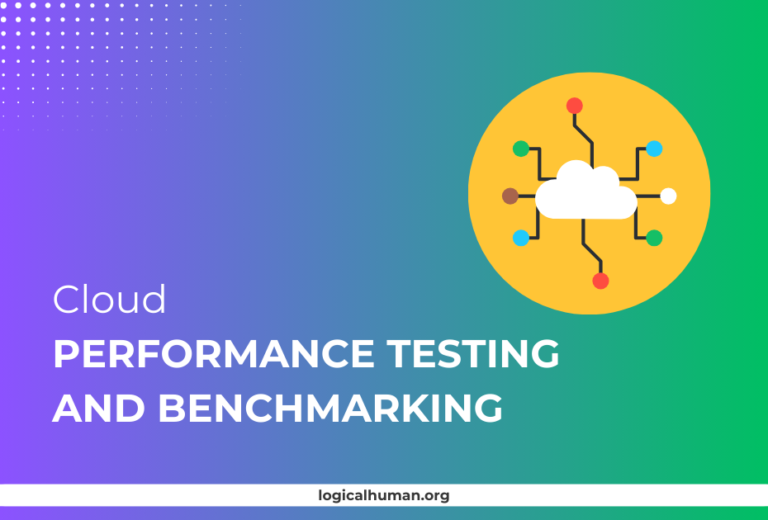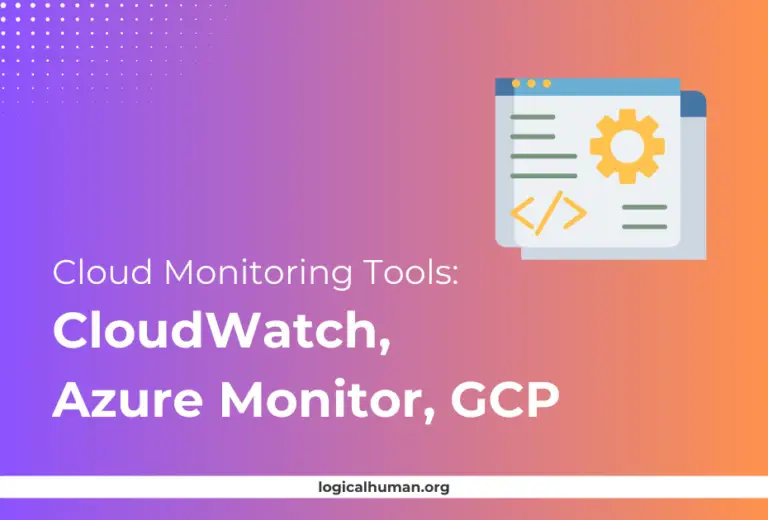In the world of cloud computing, Service Level Agreements (SLAs) are more than just a formality. They are the foundation of trust between service providers and customers, defining expectations, performance, and reliability. But what exactly are SLAs, and why are they so crucial? Let’s dive deep into the basics of Cloud SLAs and explore their importance, components, and best practices.
What is a Cloud Service Level Agreement (SLA)?
A Cloud Service Level Agreement (SLA) is a formal document between a cloud service provider and the customer that outlines the expectations and obligations regarding service performance, availability, and other key metrics. It serves as a benchmark for the quality and reliability of the service provided, ensuring that both parties have a clear understanding of what is expected.
Definition of SLA
At its core, an SLA is a promise. It’s an assurance that the cloud service provider will meet certain predefined standards of service quality. These agreements often cover aspects such as uptime, response time, support, and issue resolution. Essentially, it’s a written commitment that holds providers accountable for their services.
Core Components of an SLA
Every SLA includes several critical components, such as:
- Service Scope: What services are covered and their extent.
- Performance Metrics: Specific metrics like uptime and latency.
- Roles and Responsibilities: Clear delineation of what the provider and customer are responsible for.
- Penalties and Remedies: Actions to be taken if the service provider fails to meet the agreed standards.
Why are SLAs Important in Cloud Computing?
SLAs are crucial because they establish clear expectations and accountability. They ensure that businesses relying on cloud services have a safety net, protecting them from potential service failures and disruptions.
Ensuring Reliability and Performance
For businesses, uptime and performance are non-negotiable. An SLA guarantees a specific level of reliability, giving businesses the confidence that their operations won’t be hindered by unexpected downtimes or performance lags.
Protecting Business Interests
An SLA is essentially a safeguard for business interests. It provides legal recourse in case the service provider fails to meet their obligations, protecting the customer from financial or operational losses.
Key Components of a Cloud SLA
Understanding the core components of an SLA is vital for evaluating its effectiveness and relevance to your business needs. Let’s break down the essential elements:
Service Availability and Uptime
Uptime is one of the most critical metrics in an SLA. It specifies the percentage of time the service will be available. Common benchmarks are 99.9% (three nines), 99.99% (four nines), and so on. The higher the percentage, the less downtime you can expect.
| Feature | Amazon Web Services (AWS) | Microsoft Azure | Google Cloud Platform |
|---|---|---|---|
| Uptime Guarantee | 99.99% | 99.9% | 99.95% |
| Service Credits | Based on service downtime | Based on service downtime | Based on service downtime |
| Response Time | Within 15 minutes for critical issues | Within 15 minutes for critical issues | Within 15 minutes for critical issues |
| Support Availability | 24/7, global support | 24/7, global support | 24/7, global support |
| Data Backup & Recovery | Automated backups, multi-region options | Automated backups, geo-redundant | Automated backups, geo-redundant |
Performance Metrics
Performance metrics include latency, data transfer rates, and other indicators that measure the service’s speed and efficiency. These metrics help in assessing the service’s overall performance and user experience.
Support and Response Time
Support is often an overlooked component of SLAs. It covers the availability and responsiveness of customer support services, detailing how quickly issues will be acknowledged and resolved.
Security and Data Protection
Given the increasing concerns around data breaches, SLAs now often include security commitments, outlining the measures the provider will take to protect sensitive data and ensure compliance with regulations.
Disaster Recovery and Backup
This component outlines the provider’s commitment to data backup and recovery in case of a disaster, ensuring business continuity and data integrity.
Types of Cloud SLAs
Different types of SLAs cater to various business needs. Here are the three primary types:
Customer-based SLA
This type is tailored for individual customers and includes specific terms and conditions unique to that customer’s needs.
Service-based SLA
This SLA applies to all customers using a specific service, ensuring uniform standards across the board.
Multi-level SLA
A more complex structure that addresses multiple stakeholders’ needs, such as the entire organization, specific departments, or individual users.
How to Evaluate a Cloud SLA
Choosing the right SLA is crucial for your business’s success. Here’s how to evaluate one effectively:
Assessing Uptime Guarantees
Look for SLAs that offer at least 99.9% uptime. Calculate the potential downtime to ensure it aligns with your business tolerance levels.
Understanding Performance Metrics
Ensure that the performance metrics match your business’s operational needs. For instance, if you’re in e-commerce, fast data transfer and low latency are critical.
Reviewing Support Options
Check if the support options meet your business’s requirements, especially if you need 24/7 support.
Common Challenges with Cloud SLAs
Despite their importance, SLAs come with their own set of challenges.
Ambiguous Terms and Conditions
Vague terms can lead to misunderstandings. Always ensure the SLA is detailed and unambiguous.
Enforcement and Compliance Issues
Even the best SLAs are meaningless if they aren’t enforced. Regular monitoring is essential to ensure compliance.
Hidden Costs and Penalties
Be aware of potential hidden costs and penalties for non-compliance or early termination.
Negotiating Cloud SLAs
Negotiation is a critical step in finalizing an SLA. Here’s how to do it effectively:
Identifying Business Requirements
Understand what your business needs from the cloud service. This will form the basis of your negotiation strategy.
Customizing SLA Terms
Don’t be afraid to ask for custom terms. Most providers are willing to negotiate, especially for enterprise customers.
Setting Realistic Expectations
Set achievable benchmarks and expectations to avoid conflicts and misunderstandings.
Best Practices for Managing Cloud SLAs
Managing SLAs effectively requires ongoing effort and vigilance.
Regular SLA Reviews
Regularly review your SLA to ensure it still meets your business needs. Adjust terms as necessary.
Monitoring SLA Compliance
Use monitoring tools to keep track of SLA compliance and address issues promptly.
Leveraging SLA Reports
Utilize SLA reports to gain insights into service performance and identify areas for improvement.
How to Handle SLA Breaches
SLA breaches are not uncommon, but knowing how to handle them can minimize damage.
Understanding SLA Violation Clauses
Know what constitutes a breach and the penalties involved.
Steps to Take in Case of a Breach
Document the breach, notify the provider, and take the necessary steps as outlined in the SLA.
Legal Recourse Options
In severe cases, legal action may be required. Consult legal experts to explore your options.
Cloud SLA Examples
Let’s look at some real-world examples of SLAs from major cloud providers:
Amazon Web Services (AWS) SLA
AWS offers a 99.99% uptime guarantee for its services. It also has a well-defined policy for service credits in case of SLA violations.
Microsoft Azure SLA
Azure provides a 99.9% uptime guarantee and includes additional terms for specific services like storage and networking.
Google Cloud Platform SLA
Google Cloud offers a 99.95% uptime guarantee and a transparent process for claiming service credits.
Future Trends in Cloud SLAs
The landscape of cloud SLAs is evolving, driven by advancements in technology.
Automated SLA Management
Automation tools are increasingly being used to monitor and manage SLAs in real-time, reducing human error and improving efficiency.
AI-Driven SLA Optimization
AI can analyze vast amounts of data to optimize SLA terms and predict potential issues before they occur.
Common Mistakes to Avoid with Cloud SLAs
Avoid these pitfalls when dealing with SLAs:
Ignoring the Fine Print
Always read the fine print to avoid unpleasant surprises later.
Overlooking Termination Clauses
Ensure you understand the terms for terminating the SLA, including any penalties involved.
Not Defining Clear Responsibilities
Clearly define what each party is responsible for to prevent disputes.
Conclusion
Cloud SLAs are essential for ensuring that your cloud services meet the required performance and reliability standards. They provide a safety net, protecting your business interests and offering a clear framework for accountability. By understanding the components, challenges, and best practices of cloud SLAs, you can make informed decisions that align with your business goals.
FAQs
What is the purpose of a Cloud SLA?
A Cloud SLA sets the expectations and responsibilities of both the service provider and the customer, ensuring that the service meets predefined standards for performance, availability, and support.
How is SLA uptime calculated?
SLA uptime is calculated as the percentage of time the service is operational and available. It is often expressed as a percentage, such as 99.9% uptime, indicating the service is down for a minimal amount of time.
Can SLAs be customized?
Yes, SLAs can be customized to meet specific business needs, particularly for enterprise customers. Negotiating customized terms ensures that the SLA aligns with your unique requirements.
What happens if a cloud provider fails to meet the SLA?
If a provider fails to meet the SLA, they may offer service credits or other compensation as outlined in the agreement. In severe cases, legal action can be taken.
How often should SLAs be reviewed?
SLAs should be reviewed regularly, at least annually, or whenever there are significant changes to your business operations or cloud service needs.



